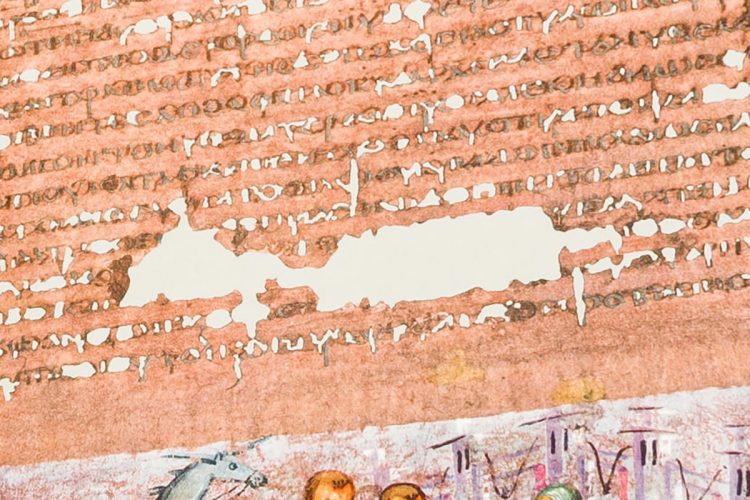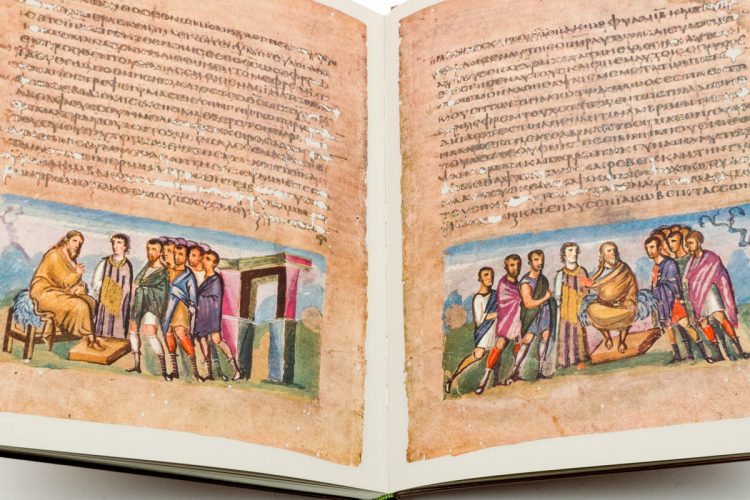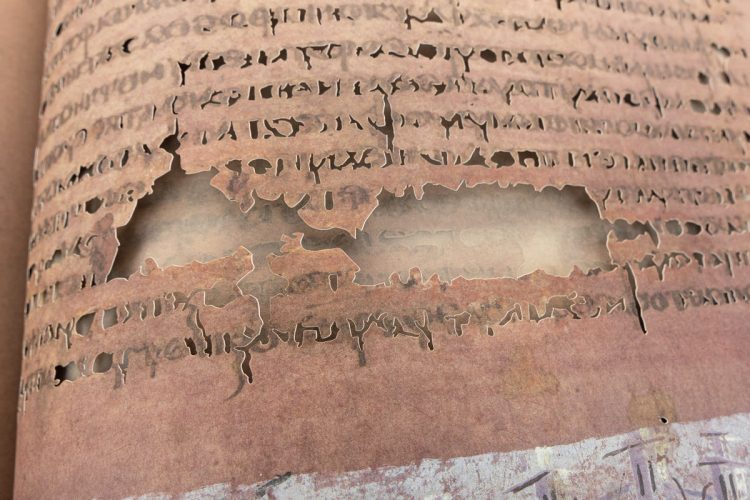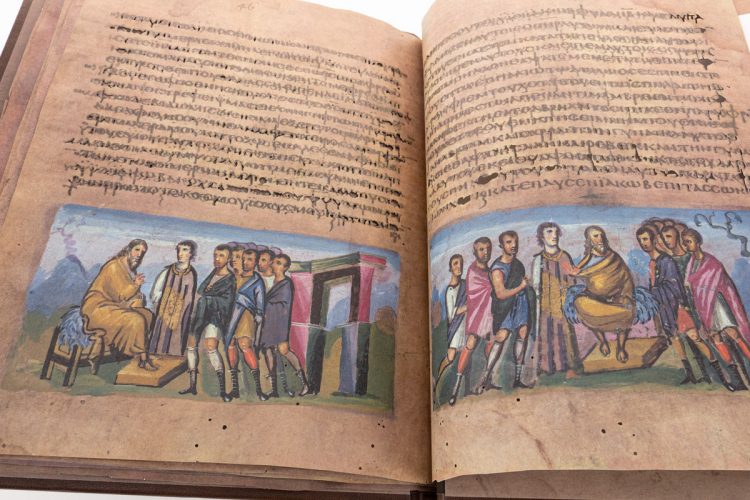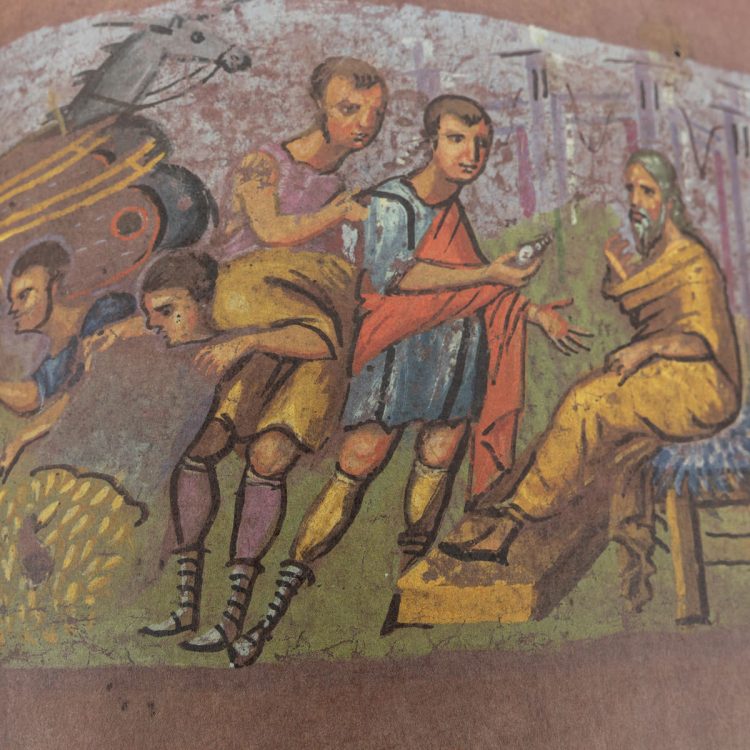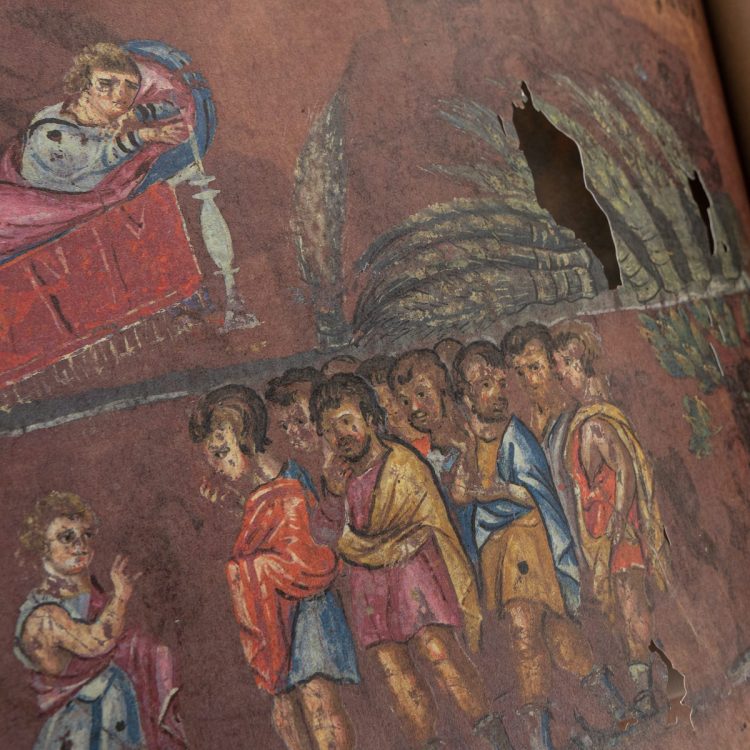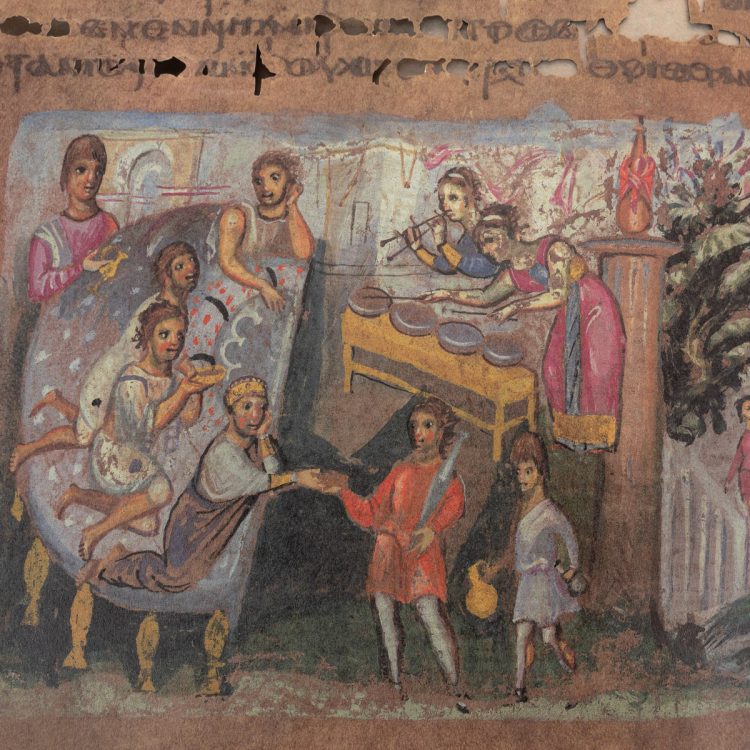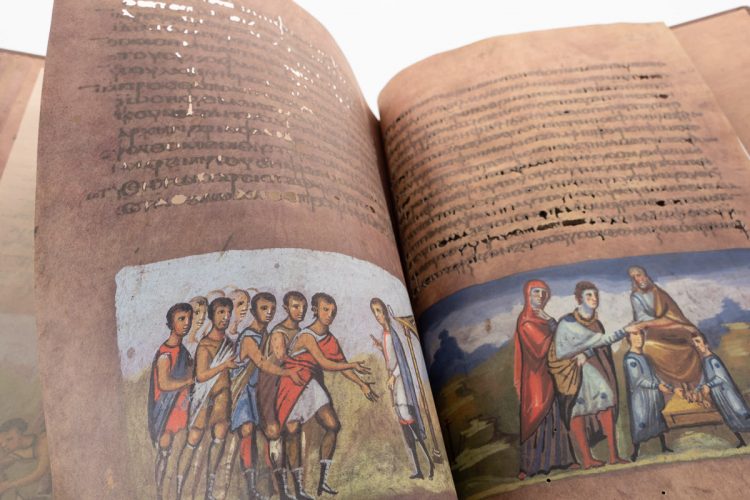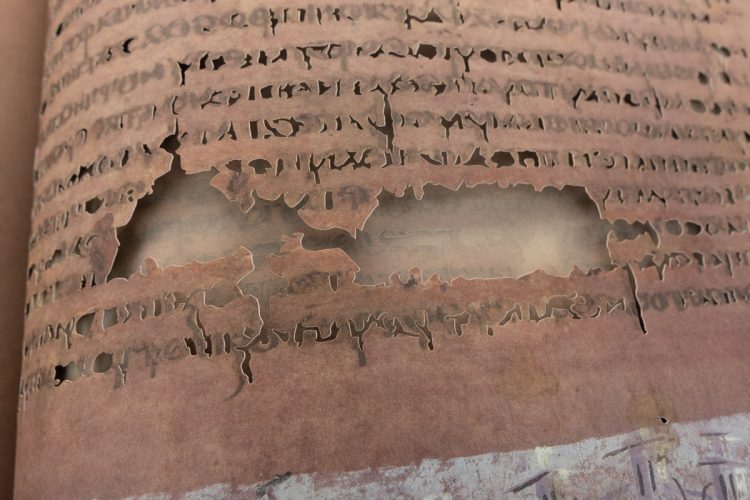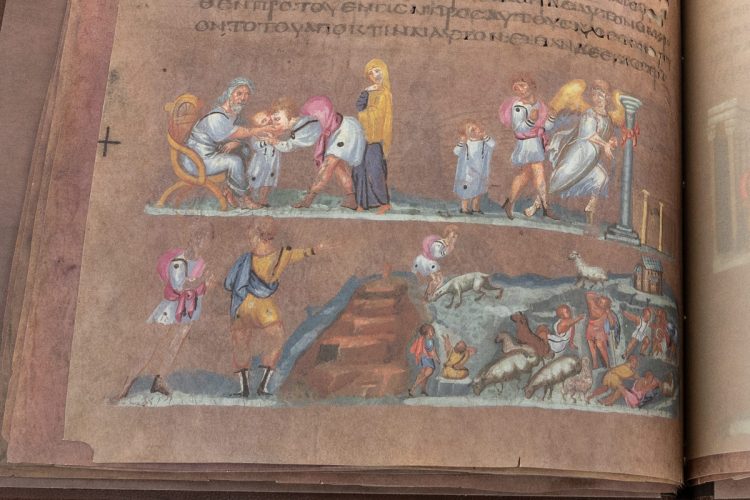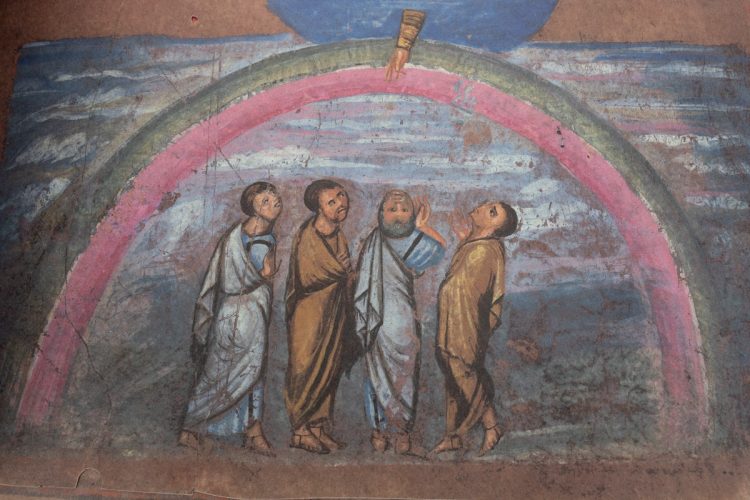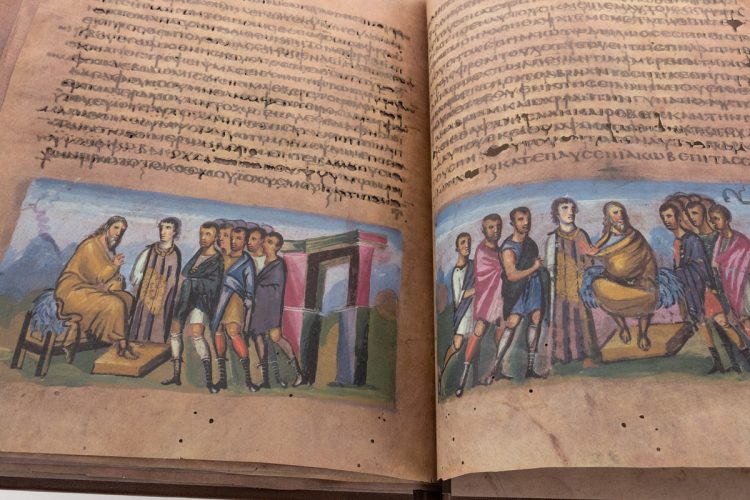We wanted to know how Quaternio Verlag was able to reproduce the century-old folios of the Vienna Genesis down to the smallest detail. What we found out exceeds our expectations.

More than 1500 years have gone by since illuminators in Antioch, Syria, decorated the folios of the Vienna Genesis with strikingly lifelike characters. The plant and mineral pigments still shine as brightly as in the days of early Christianity, yet the thin parchment, originally dyed purple to celebrate Emperor Justinian I, has darkened to changing shades of brown, with holes resulting from corrosion.
The volume, considered the oldest surviving purple manuscript and unparalleled cultural heritage, is safely kept under lock and key in the sumptuous Austrian National Library in Vienna. For those who would like to lay their hands on this masterpiece of Western culture, there is only one possible chance: getting hold of one of its facsimile editions. However, not every replica is the same.
The first one was produced in 1980 by Insel Verlag, a major German publishing house that released its earliest facsimile – St Matthew Passion by Johann Sebastian Bach – as far back as 1922. The 1980 version of the Vienna Genesis reproduces the size and color of the original, with collotype facsimile pages printed on a larger grey background.
Vienna Genesis by Insel Verlag
Vienna Genesis by Quaternio Verlag
More than thirty years later, a Swiss publisher specializing in facsimiles, whose founder Gunter Tampe is an expert in bookbinding and illumination, took up the challenge of getting even closer to the 6th-century artwork. Quaternio Verlag’s lithographers did everything in their power to replicate even the barely perceptible details.
Some of the details reproduced in the Quaternio Verlag edition of the Vienna Genesis measure 10 micrometers, namely 10 times one-millionth of a meter.
In the past three decades, facsimile art has made an amazing leap forward thanks to digital imaging technology, allowing for greater precision and faithfulness to the original, which is exactly what Gunter Tampe and his team strive for.
But in which way is the 2019 edition by Quaternio different from the previous one?
First of all, the Swiss team was able to reproduce every single shade of brown and purple, which vary among each folio. This took great expertise and patience, as the pages need to be printed dozens of times until the result matches the original. The same process goes for the colors of miniatures and text, and for the shell gold and silver hues that shimmer every time the pages are turned.
Quaternio Verlag did not simply leave the irregular holes blank but decided to reproduce them using laser punching. Every single sign of aging is perceivable on the facsimile, and holding it in one’s hands means feeling the passage of time on its fragile sheets of parchment. This is just one of the reasons why the facsimile edition was published under the great patronage of the Austrian UNESCO Commission.
In the workshop of Quaternio Verlag, the Latin origin of the word facsimile comes to life: it is an imperative form meaning “make it similar!”
Only after the library staff has given their approval to each page are the sheets ready for binding. The folios of this 6th-century gem were originally loose, but Quaternio Verlag decided to bind them together. Insel Verlag had also done so in their edition, which came in two different bindings, burgundy and cabra.
Each of the 480 copies of Quaternio’s limited edition is contained in a dark-brown goatskin binding that matches the purple hues of the parchment. The binding was decorated using blind stamping technique – first, experts engraved the geometrical pattern of lines onto the front and back sides, then the dot pattern was embossed with gold.
To top it up, the edition includes an invaluable commentary with a description of illuminations by Barbara Zimmermann, an introduction to the cultural and codicological context of the Vienna Genesis by Christian Gastgeber of the Austrian Academy of Sciences, and an account of the restoration by Christa Hofmann of the Austrian National Library.
We cannot imagine a better way to bring the thousand-year-old purple codex back to life!


